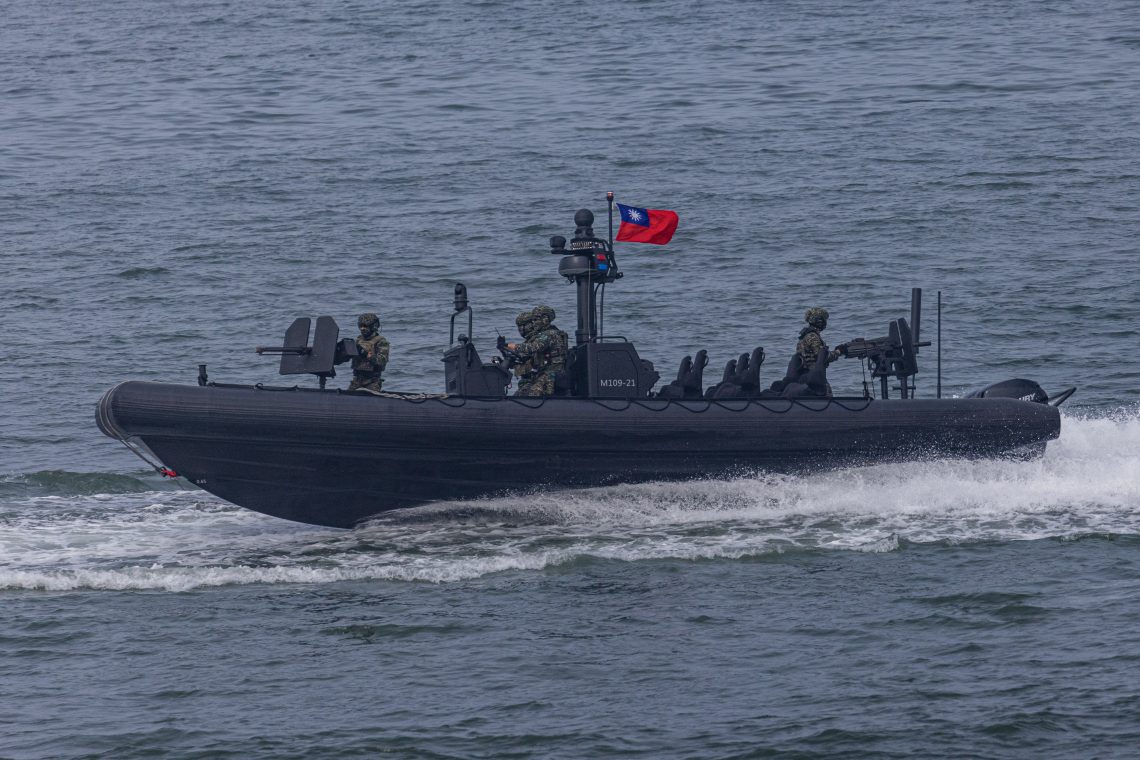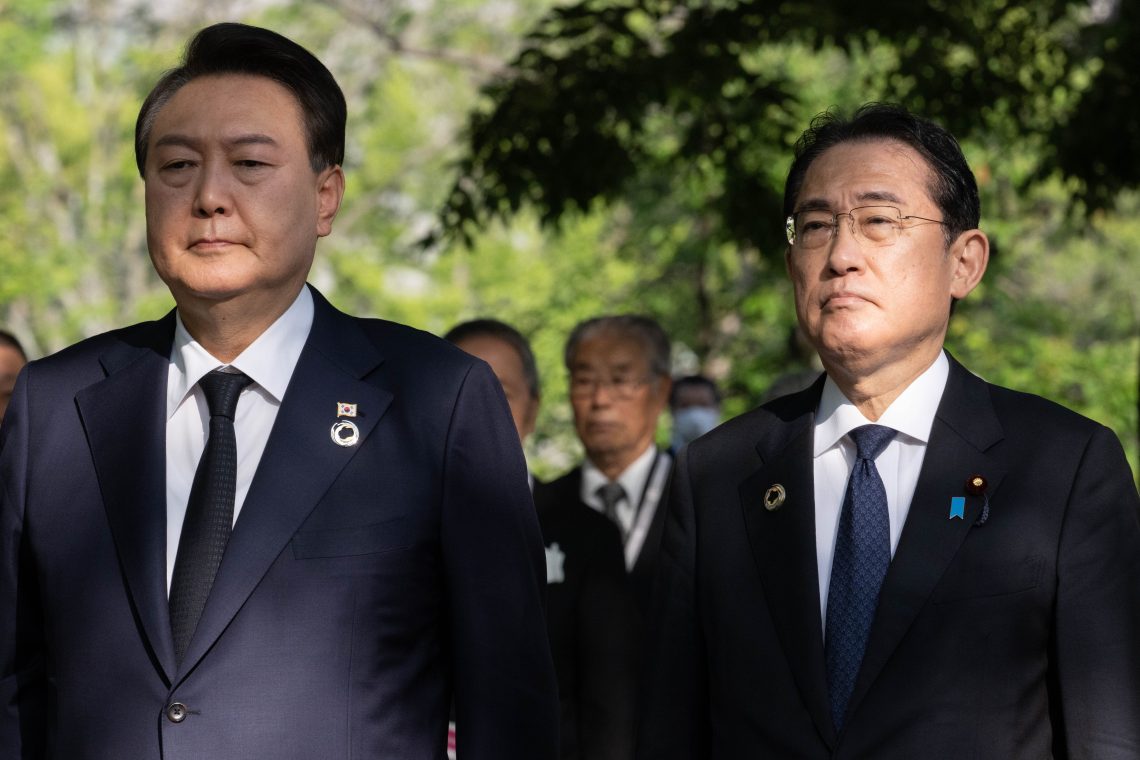The difficulties in creating an Asian NATO
Differences among Asian nations as well as a lack of unity about China policy make the emergence of a NATO-like organization highly unlikely.

In a nutshell
- Even without a military alliance, Indo-Pacific collective deterrence can strengthen
- Some of China’s stronger Asian trade partners do not want to confront Beijing
- Political differences work against the adoption of mutual defense commitments
For decades, the greatest military challenge to the United States and Europe was the Soviet Union. From this threat emerged the North Atlantic Treaty Organization (NATO) and the creation of a collective defense by the U.S. and its allies against the Soviet bloc. Despite Russia’s continued aggression in Europe and especially Ukraine today, China has replaced Russia as the world’s leading security challenge. The U.S. sees China as “the only competitor with both the intent to reshape the international order and, increasingly, the economic, diplomatic, military and technological power to do it.”
Given the increasing growth of China’s military and security forces and its attempts to change international norms and provocations in the Indo-Pacific region, there are questions about whether it is time for the U.S. and Asian countries to form an organization like NATO.
The U.S. has recently been working more closely with its like-minded partners and allies in the Indo-Pacific region to deter threats like China. But it is unlikely that Asian countries will come together anytime soon to form an alliance with collective defense provisions as strong as NATO’s Article 5, under which an attack on one ally is regarded as an attack on all members. While the U.S. has good relations with its partners and allies in the Indo-Pacific, the ties among these countries are not always amicable.
Countries in the region have varying relations with China as well, with some, particularly in Southeast Asia, appearing less concerned about China’s growing belligerence. Many also have a strong connection with Beijing as an economic partner.
Yet countries in the Indo-Pacific region are investing more in their defense and deterrence capabilities against potential threats. There are also steps that can be taken to improve intelligence sharing, material support and joint military operations, similar to what NATO members engage in. Still, countries in the region have not reached a point where they are willing to make explicit commitments similar to those in the North Atlantic Treaty, especially against a potential threat and major economic partner like China.
More by Riley Walters
China’s military puts Indo-Pacific on edge
Biden’s Indo-Pacific economic push lacks punch
The future of Australia-China relations
America’s long history in Asia
The U.S. military has had a well-established presence in Asia for over a century. In the decade after World War II, leading up to the Korean War, the U.S. entered into defense agreements with various Asian countries, including the Philippines, Japan, South Korea, Australia and New Zealand.
Since then, the U.S. has built security with such Southeast Asian nations as Thailand and Singapore, and with partners like Taiwan. Today, while many of the countries are signing new defense and security cooperation agreements among themselves, defense commitments are lacking among most of these countries except for the ones they have with the U.S.

Successive U.S. administrations have been busy filling in the gaps by deepening the security relationships it has in Asia. In 2017, there was a revival of the Quadrilateral Strategic Dialogue (the Quad) among the U.S., Japan, Australia and India. These countries have met regularly since then to address such issues as maritime domain awareness. The U.S. has increased its arms sales in the region, including selling fighter jets to Indonesia and missiles to Taiwan. Regular participation in military exercises continues.
Recently, Deputy Assistant to the President and Coordinator for Indo-Pacific Affairs Kurt Campbell listed several accomplishments of President Joe Biden’s administration in the Indo-Pacific, including a trilateral security deal signed by Australia, the United Kingdom and the U.S., support for Japan’s new defense investments, the identification of new bases for joint use in the Philippines and encouragement of confidence-building steps between South Korea and Japan.

Building an Asian NATO
The creation of an Asian version of NATO is not the same as NATO in Asia. Recent reports that NATO is contemplating a liaison office in Japan and expanding cooperation with Japan, South Korea, Australia and New Zealand, reflect Western concern about China under President Xi Jinping. Russia is also a country partly in Asia and enjoys strong relations with China and North Korea. NATO’s 31 members are focused on Europe and North America. It serves as a possible model for Asian countries should they wish to establish their own version of the Indo-Pacific region.
Which countries might be interested in founding an Asian military alliance? Japan has a mutual defense treaty with the U.S., but the country’s constitution is explicitly pacificist. Japanese policy even limits the export of certain military equipment. Despite its ongoing border disputes with China, India promotes nonalignment. Taking part in an Asian defensive alliance is contrary to New Delhi’s policy.
The 10 members of the Association of Southeast Asian Nations (ASEAN) have varying opinions about the U.S. and China. Membership in an Asian NATO could potentially become a point of contention and threaten the consensus-building that ASEAN strives to achieve.
Any countries that would become the founding members of such an alliance would shape the focus of such an alliance. Would it cover the same area that is covered by the U.S. Navy’s 7th Fleet? This includes the Pacific and Indian oceans, as well as the areas around Australia and Oceania. Even if it were focused only on East Asia, stark political tension remains between America’s two important allies: South Korea and Japan. While the current administrations in Seoul and Tokyo are working to repair the rocky relationship and build military cooperation, it’s hard to look past the long-standing distrust that still exists between these two countries.
Finally, there is a question about the security of Taiwan. While numerous volatile situations exist across the Indo-Pacific, the threat of China invading Taiwan commands the most attention. In a recent G7 leaders summit in Japan, leaders reaffirmed “the importance of peace and stability across the Taiwan Strait as an indispensable element in security and prosperity in the international community, and call for the peaceful resolution of cross-strait issues.”
No country in Asia has formal diplomatic relations with Taiwan. The island’s closest security agreement is with the U.S., one often referred to in Washington as “strategic ambiguity,” meaning the U.S. has neither committed to nor denied its willingness to defend Taiwan if China were ever to invade. Whether an Asian military alliance would have to support the U.S. defense of Taiwan would be top of mind for any potential members.
Many may think of NATO simply within the context of its Article 5 provisions. But NATO activities include military, intelligence and other support as well. Being a member of NATO does not prevent countries from providing similar support to those outside the group. Just like the U.S. and European and Asian states are now supporting Ukraine in the absence of a mutual defense treaty, countries in Asia are free to build deterrence and share materiel support both before and during a conflict.
Scenarios
The U.S. will continue to deepen its partnerships in Asia. Allies like Japan, South Korea and Australia will also look to deepen their security partnerships in Asia and with Europe. China will also look for security partners as well. Despite these efforts, an Asian NATO is not on the horizon. Even if the terms to create an Asian NATO place less impetus on a version of Article 5, Japan’s pacifist constitution, India’s strategic nonalignment and the complicated relationships among Asian countries limit what potential members could bring to such an alliance.
The U.S. already has mutual defense agreements with several Asian nations. The lack of an Asian analog to NATO does not mean that deterrence cannot be strengthened or that countries in Asia cannot provide support to each other and other allies in the event of a conflict. Expect to see more agreements in Asia among U.S. partners and allies that enhance security cooperation, including research and development, information sharing and combat preparedness.









